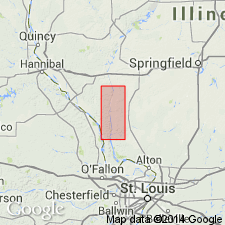
- Usage in publication:
-
- Auburn chert
- Modifications:
-
- Original reference
- Dominant lithology:
-
- Limestone
- Chert
- AAPG geologic province:
-
- Lincoln anticline
Summary:
Pg. 14, 16. Auburn chert. Intensely hard bluish limestone, with soft chert bands full of fossils, forming surface stone of Auburn, Lincoln County, central-eastern Missouri. Included in Trenton limestone. [Age is Middle Ordovician.]
Source: US geologic names lexicon (USGS Bull. 896, p. 91).
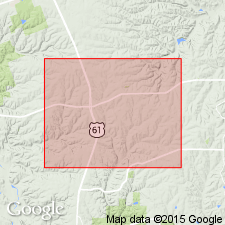
- Usage in publication:
-
- Auburn chert
- Modifications:
-
- Age modified
- Biostratigraphic dating
- AAPG geologic province:
-
- Lincoln anticline
Summary:
Pg. 175-194. Auburn chert. Correlated Auburn chert with Decorah shale, and stated that it "apparently lies at about same horizon as Bryant limestone." [Age is Middle Ordovician.]
Source: US geologic names lexicon (USGS Bull. 896, p. 91).
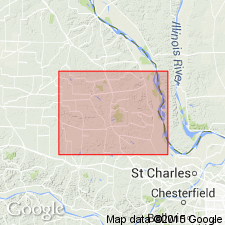
- Usage in publication:
-
- Auburn chert
- Modifications:
-
- Revised
- AAPG geologic province:
-
- Lincoln anticline
Summary:
Pg. 66. Stated that Auburn chert is included in Plattin formation. [Age is Middle Ordovician.]
[Misprint (USGS Bull. 896, p. 91): cited reference, Missouri Bur. Geol. and Mines, 2nd ser., v. 2, should be Jour. Geol., v. 33, no. 1.]
Source: US geologic names lexicon (USGS Bull. 896, p. 91).

- Usage in publication:
-
- Auburn chert
- Modifications:
-
- Overview
- AAPG geologic province:
-
- Lincoln anticline
Summary:
C.L. Fenton (1928) and S. Weller and S. St. Clair (1928). See under Plattin limestone.
J. Bridge, March 1937 (personal note). Auburn chert is = Decorah or possibly is slightly younger. [Age is Middle Ordovician.]
Source: US geologic names lexicon (USGS Bull. 896, p. 91).
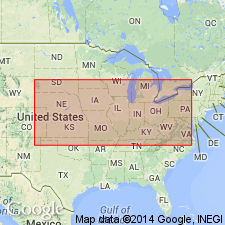
- Usage in publication:
-
- Auburn chert
- Modifications:
-
- Overview
- AAPG geologic province:
-
- Lincoln anticline
Summary:
Pg. 262-263, chart 2 (column 51). Auburn chert. Placed in lowest Trentonian to conform to placement of Spechts Ferry shale with which it is correlated. [Age is Middle Ordovician.]
Source: US geologic names lexicon (USGS Bull. 1200, p. 170).
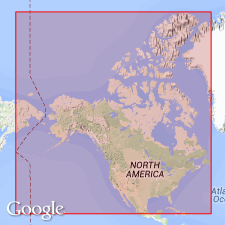
- Usage in publication:
-
- Auburn chert
- Modifications:
-
- Age modified
- Biostratigraphic dating
- AAPG geologic province:
-
- Lincoln anticline
Summary:
Pg. 117. Auburn chert. Has been suggested that Auburn chert be included in Plattin group, but brachiopods are not in accord with this suggestion. Presence of RAFINESQUINA indicates a higher correlation. Here suggested that formation may be chertified Decorah of Missouri, =Barnhart formation (new), rather than Plattin and correlation should be with Guttenberg member of Decorah. [Age is Middle Ordovician (Trentonian of Twenhofel and others, 1954, GSA Bull., v. 65, p. 247-298).]
Source: Publication; US geologic names lexicon (USGS Bull. 1200, p. 170).
For more information, please contact Nancy Stamm, Geologic Names Committee Secretary.
Asterisk (*) indicates published by U.S. Geological Survey authors.
"No current usage" (†) implies that a name has been abandoned or has fallen into disuse. Former usage and, if known, replacement name given in parentheses ( ).
Slash (/) indicates name conflicts with nomenclatural guidelines (CSN, 1933; ACSN, 1961, 1970; NACSN, 1983, 2005, 2021). May be explained within brackets ([ ]).

